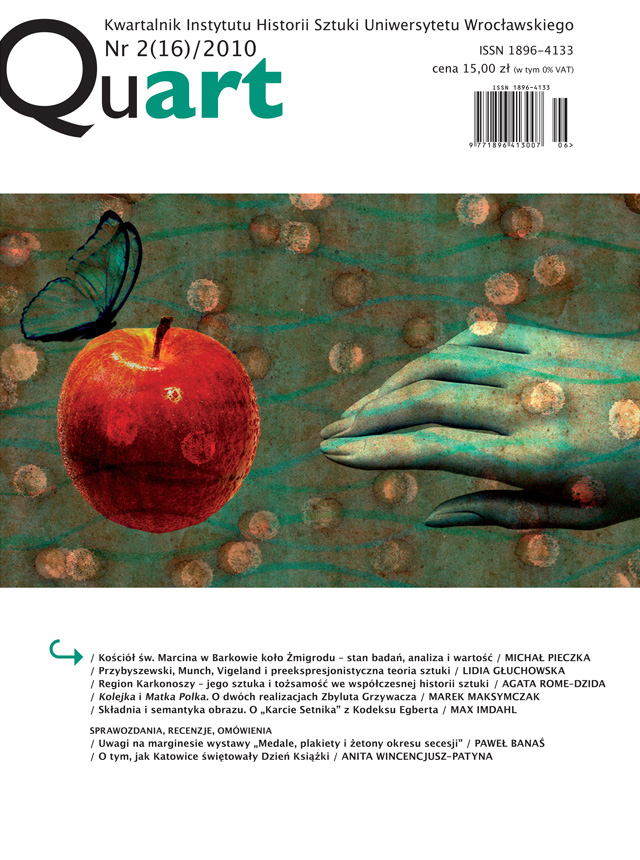Składnia i semantyka obrazu. O „Karcie Setnika” z Kodeksu Egberta
Syntax and Semantics of the Image. On the "Centurator's Card" from the Egbert Codex
Author(s): Max ImdahlSubject(s): Fine Arts / Performing Arts, Visual Arts, History of Art
Published by: Wydawnictwo Uniwersytetu Wrocławskiego
Summary/Abstract: The study deals with a miniature from the Codex Egberti, one of the most renowned achievements of the Ottonian Renaissance, depicting Christ talking to a centurion, and it analyses relations between syntax and semantics of the image. The miniature shows some figures, despite the above mentioned also four apostles and four soldiers, on the ‘empty’ background, in formal regard it comes as an illumination define by the mutual relations of the figures and by the relation of the miniature itself to its painted frame. In comparison to the text of the Gospel (Matthew, 8), which records the talk between the figures in four phases, the picture presents only one scene. However, regarding the linear and plane constitution of Christ figure, his acting is marked with ambiguity, which refers him to all the characters in dialogue, both the centurion and the apostles, thanks to this the image is capable of presenting the whole of the event described in the text. A few experiments of changing Christ’s position in relation to the image field and to the accompanying him groups of characters also prove this ability, as well as comparing the results of changes with the original solution. With the aim of these experiments the author proves that each movement within the syntax of the image disturbs its semantics, which led to the conclusion that painting itself is a speech thanks to its natural abilities of realising varied layers of sense as a viewing unity that can be grasped simultaneously.
Journal: Quart
- Issue Year: 16/2010
- Issue No: 2
- Page Range: 77-89
- Page Count: 13
- Language: Polish

